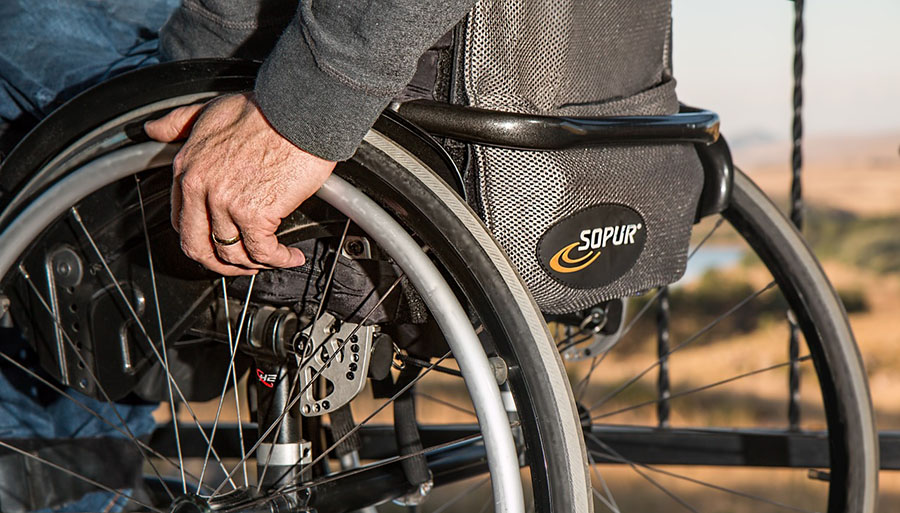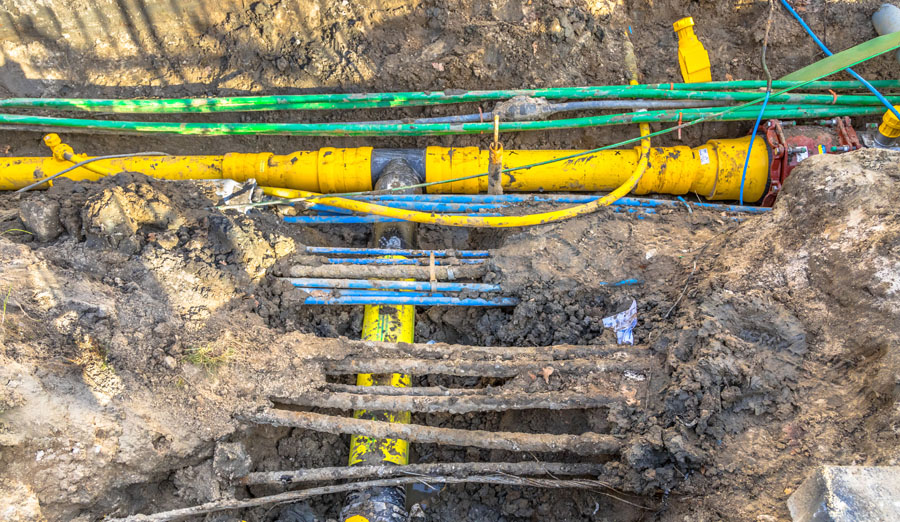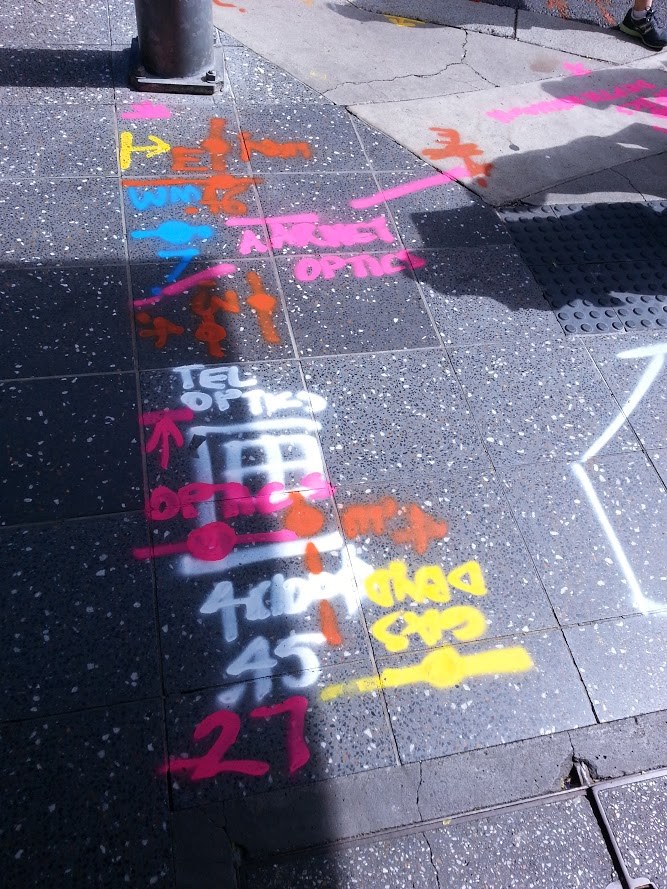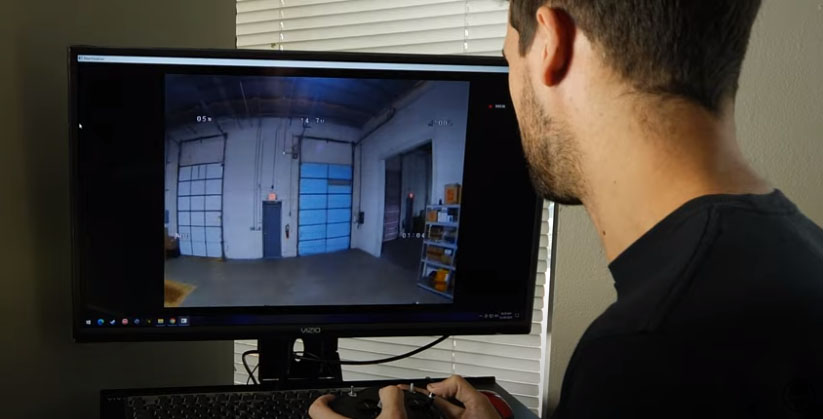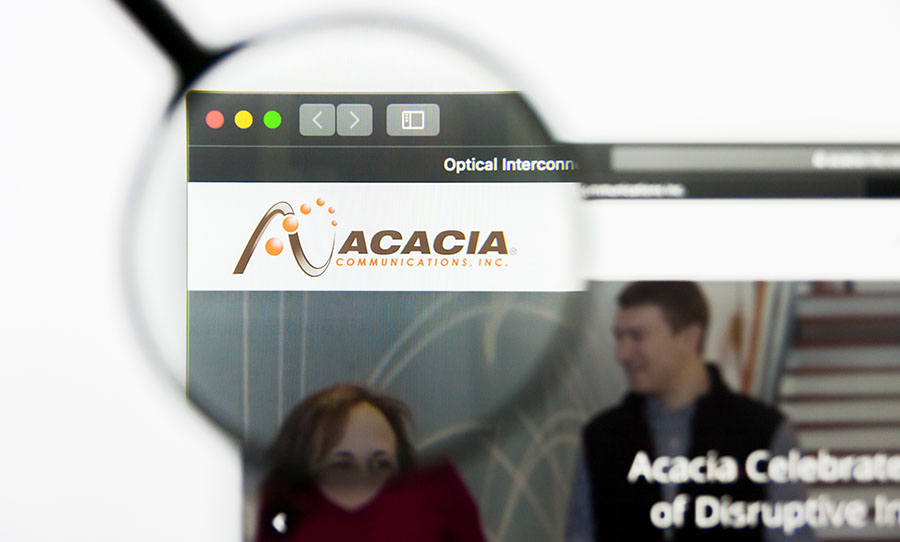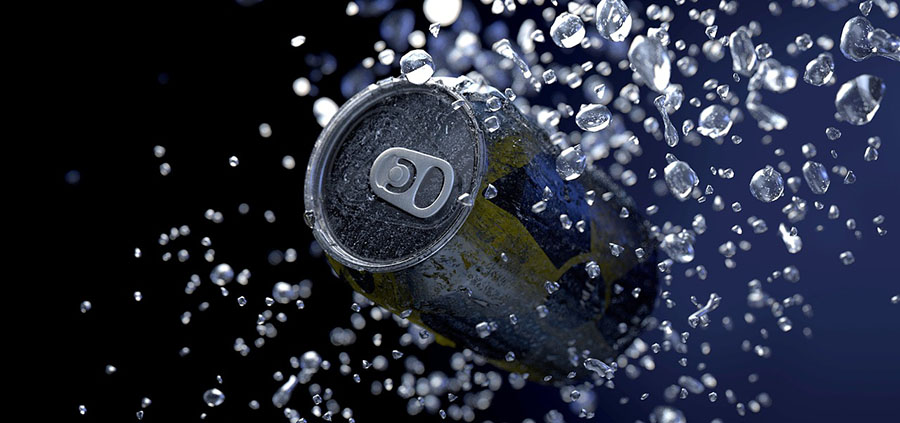How best to secure a venue where hundreds if not thousands of patrons are in attendance? And, how to do so without destroying the enjoyment of attendees or bankrupting the venue operators? These are the questions that have become of foremost importance to venue operators in this day and age.
When it comes to physically securing a property, there are really two ways to do this. The first is the "Fortress America" method; hire tons of visible security, install metal detectors and basically physically screen at every entrant. We've all dealt with this, be it at airports or sporting events. It's a time-consuming process that is expensive, invasive and highly noticeable by everyone.
"Fortress America" works, but it's not a solution that is feasible for all venues. On top of the expense and inconvenience, it also has the flaw of detecting threats only when they have reached the entrance of the venue. This, unfortunately, provides no time for first responders to be prepared for a threat.
Patriot One (PAT) is working on an alternative approach to threat detection and prevention. By using modern technologies and artificial intelligence (AI) algorithms, PAT is developing key solutions of an alternative security system to Fortress America. Instead of an in your face, highly staffed and visible security system, PAT is building a suite of threat detection technologies that are more covert. Importantly, its products also extend the security perimeter. This allows PAT to detect threats prior to reaching a venue, allowing first responders time to react and prevent active shooter or terrorist tragedies before they develop.
"A Game Changer," James Pearson, Vancouver Police Dept.
This week I went to Las Vegas to see Patriot One, which was evaluating its layered, multi-sensor threat detection system with clients at the Global Security Expo (GSX) conference. I expected to only see the PATSCAN CMR, the revolutionary cognitive microwave radar -based weapon detection system in action. Instead I was treated to a demonstration of the whole PATSCAN multi-sensor threat detection system that not only included the CMR but several other technologies.
The diagram below is an illustration of all the PAT threat detection solutions that are in development and evaluation, coupled with the company's principal technology—PATSCAN CMR—at the entrance. Each of these systems, which I saw, are in pilot testing at Patriot One's development center in Las Vegas, and each offers a unique threat detection capability. Together, however, they represent an integrated, multi-sensor suite of threat detection products that can be the core of a venue's security solution.
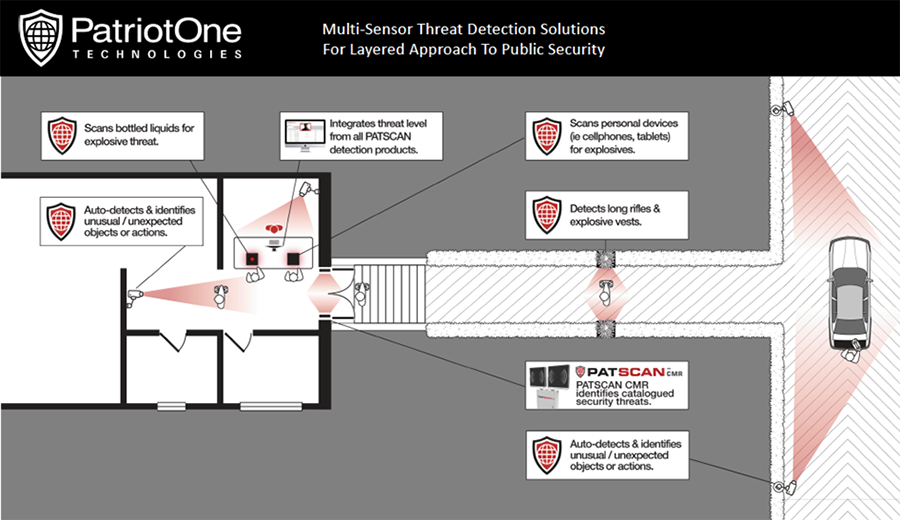
As you can see, this suite of products extends the perimeter and supports the company's core PATSCAN CMR concealed weapon detection solution at the doorway. The suite contains several other products that work together outside a building, but, equally important, it adds layers of protection inside a venue too. This means that PAT's technologies now extend the building's security perimeter all the way from the parking lot to inside.
Extension of a security perimeter is the Holy Grail for security personnel. It effectively allows them to start detecting and managing potential threats long before they reach a building. As described above, this is truly a "game changer" for first responders and security. And if by chance threats begin to take shape inside a facility, PAT has that covered as well.
The Threat Detection Products
When I got to Vegas, I was honored to be the only company "outsider" at a team dinner on Monday night. I was still under the impression that the PATSCAN CMR was its only product and that the dinner would be a handful of Patriot One executives. Knowing a fair amount about the CMR already, I was most excited to meet Tom Ridge, the former U.S. Secretary of Homeland Security, who was in town to visit the PAT development center to see the CMR, along with the other solutions that I didn't know about.
Low and behold, I barely got a chance to shake hands with Governor Ridge as there were 26 people at dinner. The attendees included an extended group of PAT engineers and developers, along with the entire executive team. Instead of a meet-and-greet, I spent four hours with software and hardware engineers as they detailed their line of threat detection products, the genesis behind them, and how they fit into what was being referred to as the PATSCAN family suite of threat detection solutions. Basically, I had come for the food and left full of excitement about the future for Patriot One.
Before getting into the products that will drive this future, it really needs to be stated that the team I met with was beyond impressive. The level of expertise at the table was phenomenal. There were several AI programmers, software and hardware engineers, and business development experts. All of them shared a deep appreciation for the PATSCAN AI capabilities behind each of the products within the family suite but, most importantly, spoke passionately about making a positive impact for people around the world. If you're judging a company by the quality of management and key personnel, PAT is looking really good.
Now, about the products. These are products in development and being piloted in Las Vegas and with select clients to evaluate product capabilities and client interest. Yes, these are all real products that, post successful pilot tests and client adoption, will be ready for deployment starting 2019. I'll walk through them, starting with the outside of the perimeter and working back to the building.
First up is the video recognition system—a software solution that bolts into an existing video camera network that has the ability to recognize drawn weapons. This is done through analysis of the video by AI algorithms. When a weapon is detected, the system alerts security and tracks the location of the person in possession.
*As an aside, it is anticipated that the system will be able to detect patterns of behavior and thermal recognition in the future that will allow it to detect concealed weapons that have yet to be drawn.
The video recognition system is intended to be on a closed-circuit video system, and most likely first use is outside a building where it can be a first line of defense in detecting people approaching a venue with weapons such as shotguns or automatic rifles.
In final pilot testing at this time, the video recognition system's software will have a monthly recurring revenue for PAT. Importantly, like the CRM, this system is AI based and will improve its results and accuracy over time.
The next line of defense is the targeted magnetic sensor. Initially sponsored under the DARPA program, this technology was developed and deployed as a perimeter defense at U.S. military bases in Afghanistan and Iraq. The initial configuration was an underground wire that detected weapons being transported over the barrier.
Today, the solution has been redesigned to be placed in paired units. When someone carries a larger concealed weapon (rifle, shotgun, bomb, etc.) between the barriers, security is alerted. The sensors can be placed in planters or other fixtures that make them unnoticeable and, yet, can funnel foot traffic between them to be screened.
This targeted magnetic sensor system is also a PATSCAN AI based system and is being constantly improved. Over time, the system's machine learning capabilities may allow for detection of smaller weapons. Most importantly, the sensors are intended to be placed farther from a venue and provide security advanced notice of any impending large weapon threats. Having been in field pilots for the past quarter, it will also go into paid pilots this year.
The next system is the company's principal technology and hardware solution—PATSCAN CMR. This CMR system, for those who don't know, uses cognitive microwave radar to detect the presence of both large and small weapons, such as rifles, handguns, knives and bombs. Using machine learning, it can distinguish between cell phones and handguns based on the resonance of the radar waves that bounce off these objects.
Equally important, with its AI interface, it constantly improves its detection capability as do the previous two systems. Additionally, since all three systems are on the PATSCAN platform, over time we can expect AI to detect traits between the three systems that will enable them to work in concert on threat detection.
CMR is meant to be placed in entries to buildings and completes the trifecta of weapon detection for PAT—detection through video recognition, magnetic sensor, microwave resonance. There are two other hardware systems on the PATSCAN platform, however. These are the explosive detection solutions for bottled liquid and personal electronic devices.
The bottled liquid and personal electronic devices explosives detection solution are overt screening systems that are meant to work in a more intense security venue, such as an airport or secure building. As described, these devices detect liquid and dry explosives, meaning if you're carrying a water bottle with liquid explosives, or a laptop with a bomb inside, it will be detected. Both devices have been tested by TSA with great results. However, with government funding cycles, first sales will likely be outside the U.S.
These five systems are all going into pilot testing and will be ready for commercial deployment at various times throughout 2019. Together they make up what the company refers to as its PATSCAN family of threat detection solutions. Together they will deliver greater success in threat detection than a single type of weapon detection system. It's a robust suite of solutions for today's most challenged professionals—security guards and law enforcement.
However, just being a hardware provider is not what had me most excited about PAT. It's the next piece of the puzzle that brings the whole system together and makes this an even more compelling offer, and a must have for many venues.
The enhanced information sharing software that has the ability to integrate a variety of threat a security sensors and solutions in one user interface dashboard, including the five PAT threat detection solutions referenced above. It's in essence one central system that monitors and controls a myriad of detection devices. But, there's more to it. The system also connects a venue with outside first responders.
This is a key differentiator for PAT and its PATSCAN family of threat detection solutions—tying into police and fire systems, thus allowing a venue like a school to go on lockdown if there is a threat in the area.
This is no small thing. As an example, if there is an active shooter near a school, you would want a lockdown imposed immediately. However, 911 is going to be extremely busy dealing with getting law enforcement officers to the area, etc. The system has the ability to tie into the 911 network and, using PATSCAN AI software, inform the school of the threat immediately, all done electronically and in real-time as opposed to waiting for a police operator to realize there's a school near the issue and pick up the phone to alert it.
If the enhanced information software tie in with a public alert systems sounds like a great idea, you're not alone in that thought. This system looks like it will make the PATSCAN family tree, as it already has a demonstrated track record with over 200 schools in Washington state. (Please note: the 200 school implementation precedes the integration into the PATSCAN multi-sensor threat detection family).
Going forward
Integrated threat detection systems, like these in the PATSCAN family, are not silver bullets. Security staff must still be hired and then trained to these new technologies. Signs may need to be posted for transparency or when activated in public places, based on provincial and civic requirements. And PAT hopes with proper introduction, these solutions will be accepted, and most importantly, adopted by the general public allowing them to move freely—and safely—in open spaces.
Low-profile asset scanning systems offer a middle ground. By deploying those in public places, on college campuses, in office buildings, and other high-traffic areas, police and other security personnel can detect weapons as soon as they cross the perimeter. Adequate public hearings, socialization and publicity would both inform the public and deter bad actors, who might never be exactly sure of where threat detection sensors have been installed. And integrated systems that notify 911 call centers could hasten the first responders who protect and defend our citizenry.
The company is still determining market demand for these products but initial feedback has been overwhelming. As such, we believe that this PATSCAN family will be incredibly well received by many locations looking for improved security systems. This has played out already as the company has signed up 12 resellers of its growing product line and have a full pipeline of sales opportunities. The next step for PAT is training the resellers, then launching into sales and installations. PAT is still on track for this to happen starting in Q4 of this year with paid client pilots, and broader commercial deployments of these solutions throughout 2019. When the market sees this happen, we expect to see PAT stock make its next big move.
Daniel Carlson is the founder and managing member of Tailwinds Research Group and its parent company DFC Advisory Services, which is a licensed registered investment advisor (CRD # 297209). Tailwinds is a microcap focused research company that provides research on and consults to over 20 emerging growth companies in the technology and life sciences arenas. DFC Advisory Services is an RIA that manages money dedicated to investing in the companies covered by Tailwinds. For more information on these two companies and their track record, please see www.tailwindsresearch.com. Prior to founding these two entities, Dan spent many years working with small public companies, having been CFO of two public companies and helping finance many others. A 1989 graduate from Tufts University with a degree in Economics, Dan’s formative years in business were spent as an equity trader, first on the Pacific Coast Stock Exchange then on the buyside at several multi-billion dollar firms.
This article was submitted by Tailwinds Research. For more information on Tailwinds Research or on Patriot One, please visit www.tailwindsresearch.com.
Tailwinds is engaged by Patriot One and owns stock in the company. For a complete list of disclosures, please click here.
Read what other experts are saying about:
Disclosure:
1) Daniel Carlson: I, or members of my immediate household or family, own shares of the following companies mentioned in this article: Patriot One. I personally am, or members of my immediate household or family are, paid by the following companies mentioned in this article: None. My company has a financial relationship with the following companies referred to in this article: Patriot One. Additional disclosures and disclaimers are above. I determined which companies would be included in this article based on my research and understanding of the sector.
2) The following companies mentioned in this article are billboard sponsors of Streetwise Reports: Patriot One. Click here for important disclosures about sponsor fees. The information provided above is for informational purposes only and is not a recommendation to buy or sell any security.
3) Statements and opinions expressed are the opinions of the author and not of Streetwise Reports or its officers. The author is wholly responsible for the validity of the statements. The author was not paid by Streetwise Reports for this article. Streetwise Reports was not paid by the author to publish or syndicate this article. Streetwise Reports requires contributing authors to disclose any shareholdings in, or economic relationships with, companies that they write about. Streetwise Reports relies upon the authors to accurately provide this information and Streetwise Reports has no means of verifying its accuracy.
4) This article does not constitute investment advice. Each reader is encouraged to consult with his or her individual financial professional and any action a reader takes as a result of information presented here is his or her own responsibility. By opening this page, each reader accepts and agrees to Streetwise Reports' terms of use and full legal disclaimer. This article is not a solicitation for investment. Streetwise Reports does not render general or specific investment advice and the information on Streetwise Reports should not be considered a recommendation to buy or sell any security. Streetwise Reports does not endorse or recommend the business, products, services or securities of any company mentioned on Streetwise Reports.
5) From time to time, Streetwise Reports LLC and its directors, officers, employees or members of their families, as well as persons interviewed for articles and interviews on the site, may have a long or short position in securities mentioned. Directors, officers, employees or members of their immediate families are prohibited from making purchases and/or sales of those securities in the open market or otherwise from the time of the interview or the decision to write an article, until one week after the publication of the interview or article. As of the date of this article, officers and/or employees of Streetwise Reports LLC (including members of their household) own securities of Patriot One, a company mentioned in this article.




